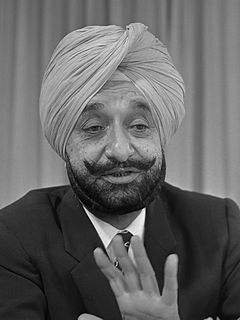Retrievers were an Indian first-class cricket team that took part in the Moin-ud-Dowlah Gold Cup Tournament in 1934-35, playing two matches.

India, official name, the Republic of India,, is a country in South Asia. It is the seventh-largest country by area, the second-most populous country, and the most populous democracy in the world. Bounded by the Indian Ocean on the south, the Arabian Sea on the southwest, and the Bay of Bengal on the southeast, it shares land borders with Pakistan to the west; China, Nepal, and Bhutan to the north; and Bangladesh and Myanmar to the east. In the Indian Ocean, India is in the vicinity of Sri Lanka and the Maldives; its Andaman and Nicobar Islands share a maritime border with Thailand and Indonesia.
First-class cricket is an official classification of the highest-standard international or domestic matches in the sport of cricket. A first-class match is of three or more days' scheduled duration between two sides of eleven players each and is officially adjudged to be worthy of the status by virtue of the standard of the competing teams. Matches must allow for the teams to play two innings each although, in practice, a team might play only one innings or none at all.
The Moin-ud-Dowlah Gold Cup Tournament is an Indian cricket competition that has been held in Hyderabad since 1930-31. From 1930-31 to 1937-38, and from 1962-63 to 1973-74, it had first-class status.
After the Maharajkumar of Vizianagram's team the Freelooters won the Moin-ud-Dowlah Gold Cup Tournament in 1931-32 and 1932-33, his cricket-promoting rival the Maharaja of Patiala established his own team, Retrievers, for the next tournament in 1934-35. [1]

Lt. Col. Sir Pusapati Vijay Ananda Gajapathi Raju

Maharaja Sir Bhupinder Singh or Bhuppa was the ruling Maharaja of the princely state of Patiala from 1900 to 1938.
Captained by the Maharaja's son the Yuvraj of Patiala and consisting of 10 Indian Test players along with the Australian leg-spinner Frank Warne, the Retrievers dominated their semi-final against Hyderabad Cricket Association XI, [2] and met Freelooters in the final. Thanks to a century by Lala Amarnath and the bowling of Mohammad Nissar (eight wickets) and C. K. Nayudu (seven wickets), they won by three wickets. [3] Neither Retrievers nor Freelooters played again.

Sir Yadavinder Singh

Test cricket is the form of the sport of cricket with the longest match duration, and is considered the game's highest standard. Test matches are played between national representative teams that have been granted "Test status", as determined and conferred by the International Cricket Council (ICC). The term Test stems from the fact that the long, gruelling matches are mentally and physically testing. Two teams of 11 players each play a four-innings match, which may last up to five days. It is generally considered the most complete examination of a team's endurance and ability.
Frank Belmont Warne was an Australian first-class cricketer who played for teams on four continents during a 95-game career that stretched from the mid-1920s to the early 1940s.



